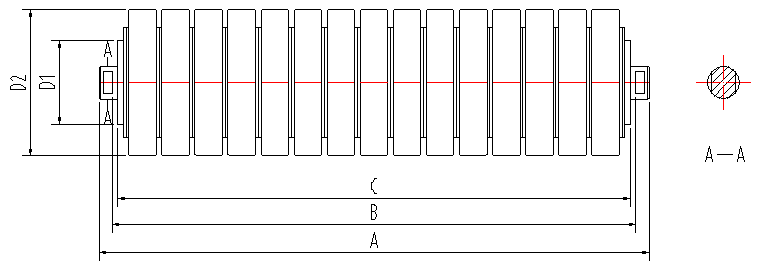 Afrikaans
Afrikaans  Albanian
Albanian  Amharic
Amharic  Arabic
Arabic  Armenian
Armenian  Azerbaijani
Azerbaijani  Basque
Basque  Belarusian
Belarusian  Bengali
Bengali  Bosnian
Bosnian  Bulgarian
Bulgarian  Catalan
Catalan  Cebuano
Cebuano  Corsican
Corsican  Croatian
Croatian  Czech
Czech  Danish
Danish  Dutch
Dutch  English
English  Esperanto
Esperanto  Estonian
Estonian  Finnish
Finnish  French
French  Frisian
Frisian  Galician
Galician  Georgian
Georgian  German
German  Greek
Greek  Gujarati
Gujarati  Haitian Creole
Haitian Creole  hausa
hausa  hawaiian
hawaiian  Hebrew
Hebrew  Hindi
Hindi  Miao
Miao  Hungarian
Hungarian  Icelandic
Icelandic  igbo
igbo  Indonesian
Indonesian  irish
irish  Italian
Italian  Japanese
Japanese  Javanese
Javanese  Kannada
Kannada  kazakh
kazakh  Khmer
Khmer  Rwandese
Rwandese  Korean
Korean  Kurdish
Kurdish  Kyrgyz
Kyrgyz  Lao
Lao  Latin
Latin  Latvian
Latvian  Lithuanian
Lithuanian  Luxembourgish
Luxembourgish  Macedonian
Macedonian  Malgashi
Malgashi  Malay
Malay  Malayalam
Malayalam  Maltese
Maltese  Maori
Maori  Marathi
Marathi  Mongolian
Mongolian  Myanmar
Myanmar  Nepali
Nepali  Norwegian
Norwegian  Norwegian
Norwegian  Occitan
Occitan  Pashto
Pashto  Persian
Persian  Polish
Polish  Portuguese
Portuguese  Punjabi
Punjabi  Romanian
Romanian  Russian
Russian  Samoan
Samoan  Scottish Gaelic
Scottish Gaelic  Serbian
Serbian  Sesotho
Sesotho  Shona
Shona  Sindhi
Sindhi  Sinhala
Sinhala  Slovak
Slovak  Slovenian
Slovenian  Somali
Somali  Spanish
Spanish  Sundanese
Sundanese  Swahili
Swahili  Swedish
Swedish  Tagalog
Tagalog  Tajik
Tajik  Tamil
Tamil  Tatar
Tatar  Telugu
Telugu  Thai
Thai  Turkish
Turkish  Turkmen
Turkmen  Ukrainian
Ukrainian  Urdu
Urdu  Uighur
Uighur  Uzbek
Uzbek  Vietnamese
Vietnamese  Welsh
Welsh  Bantu
Bantu  Yiddish
Yiddish  Yoruba
Yoruba  Zulu
Zulu belt conveyor troughing idlers
The Role of Troughing Idlers in Belt Conveyors
Belt conveyors are a fundamental component in various industries, serving as a crucial means for transporting materials efficiently. Among the numerous elements that ensure the effective operation of these systems, troughing idlers play a vital role in maintaining the belt's stability and performance during material handling.
Understanding Troughing Idlers
Troughing idlers are specific types of rollers designed to support and guide the conveyor belt as it moves along its path. Unlike flat idlers, troughing idlers feature a sloped design that creates a trough shape. This design is essential for several reasons primarily, it allows for better containment of bulk materials, reducing spillage and improving the overall efficiency of the conveyor system.
Typically, a set of three idlers is used, where the outer idlers are positioned at an angle to hold the belt in a trough configuration. This setup facilitates a higher load capacity and enhances the belt's alignment, ensuring that materials remain securely in place as they are transported. The angles of the idler frames are adjustable, making it possible to customize their configuration based on the specific requirements of the operation.
Advantages of Troughing Idlers
1. Enhanced Material Containment The trough design of these idlers significantly minimizes the chances of material spillage. This is especially critical in industries such as mining, agriculture, and recycling, where losing product can lead to increased costs and operational inefficiencies.
2. Reduced Belt Wear and Tear By providing proper support and alignment to the conveyor belt, troughing idlers reduce the risk of misalignment and excessive friction. This, in turn, minimizes wear and tear on the belt, extending its lifespan and reducing replacement costs.
belt conveyor troughing idlers

3. Increased Stability Troughing idlers contribute to the overall stability of the conveyor system. As the load shifts and changes during transport, these idlers help maintain even distribution, preventing vibrations and buckling that could lead to operational problems.
4. Improved Load Capacity The design of troughing idlers not only accommodates more material but also allows for steeper incline angles, which is particularly beneficial in facilities with limited space. By maximizing vertical transport capabilities, industries can optimize their material handling processes.
5. Customization and Versatility Troughing idlers can be customized in terms of size, shape, and materials used, ensuring compatibility with various types of belts and applications. Whether used in heavy-duty mining operations or lighter material transport systems, these idlers can be tailored to meet specific performance standards.
Applications in Various Industries
Troughing idlers are widely used across multiple sectors, including mining, agriculture, manufacturing, and logistics. In the mining industry, for instance, they support the transport of bulk materials such as coal, ores, and minerals, where containment and stability are paramount. In agricultural settings, they facilitate the movement of grains, feed, and fertilizers, helping to optimize productivity.
In manufacturing and packaging, troughing idlers aid in the handling of components and finished products, allowing for seamless transitions and efficient workflows. The flexibility and reliability of these idlers make them a preferred choice in logistics and distribution centers, where time and efficiency are crucial.
Conclusion
Troughing idlers are indispensable in the operation of belt conveyors, providing essential support, stability, and material containment. Their unique design and functionality not only enhance the performance of the conveyor systems but also contribute to overall efficiency and cost-effectiveness in various industries. As businesses continue to seek improvements in automation and material handling processes, the importance of troughing idlers will only grow, solidifying their place in the modern industrial landscape. By investing in high-quality idler systems, organizations can ensure the longevity and efficacy of their conveyor operations, paving the way for smoother business functions.
-
Revolutionizing Conveyor Reliability with Advanced Rubber Lagging PulleysNewsJul.22,2025
-
Powering Precision and Durability with Expert Manufacturers of Conveyor ComponentsNewsJul.22,2025
-
Optimizing Conveyor Systems with Advanced Conveyor AccessoriesNewsJul.22,2025
-
Maximize Conveyor Efficiency with Quality Conveyor Idler PulleysNewsJul.22,2025
-
Future-Proof Your Conveyor System with High-Performance Polyurethane RollerNewsJul.22,2025
-
Driving Efficiency Forward with Quality Idlers and RollersNewsJul.22,2025





























